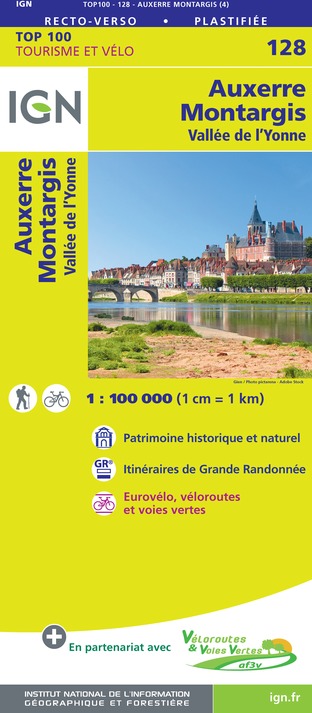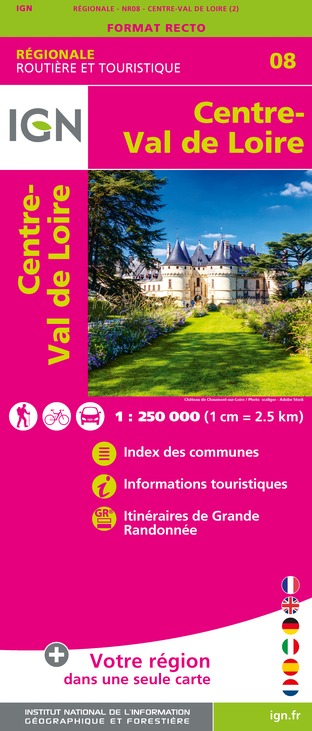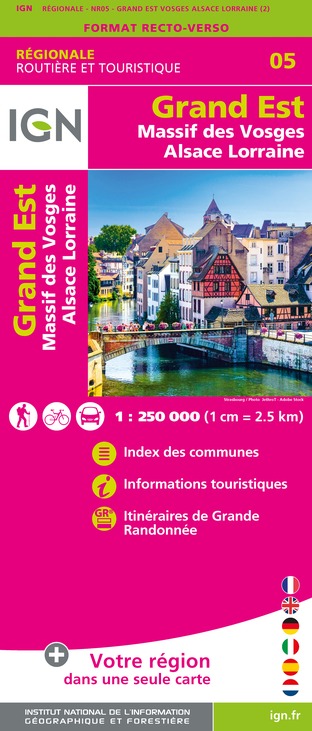Tours
Activities
Places of interest
Where to eat
Where to sleep
Discovering Saint-valerien, Yonne, Bourgogne
Are you in charge of the destination?Nestled in the heart of Burgundy, Saint-valerien invites you to marvel at its wonders. Its rich natural and cultural heritage will captivate all discovery enthusiasts. Begin your exploration with a stroll through the historic center, where the picturesque charm of traditional houses will transport you back in time. For hiking enthusiasts, the trails winding through the surrounding forests offer br...See more
Walking around Saint-valerien
See more suggestionsDiscover the trails of Saint-valerien.
See more suggestionsWhat to do in Saint-valerien
See more suggestionsOrganize your days in Saint-valerien with bookable activities for the whole family.
See more suggestionsIGN cards

2518SB - LORREZ-LE-BOCAGE-PRÉAUX CHÉROY SAINT-VALÉRIEN
Editor : IGN
Collection : TOP 25 ET SÉRIE BLEUE
Scale : 1:25 000
13.90€

128 AUXERRE MONTARGIS VALLÉE DE L'YONNE
Editor : IGN
Collection : TOP 100
Scale : 1:100 000
8.40€

119 PARIS SENS PNR DU GÂTINAIS FRANÇAIS
Editor : IGN
Collection : TOP 100
Scale : 1:100 000
8.40€

D58-D89 NIÈVRE YONNE
Editor : IGN
Collection : CARTES DÉPARTEMENTALES IGN
Scale : 1:150 000
5.90€

D75-95 ÎLE-DE-FRANCE OUEST
Editor : IGN
Collection : CARTES DÉPARTEMENTALES IGN
Scale : 1:150 000
5.90€

D41-45 LOIR-ET-CHER LOIRET
Editor : IGN
Collection : CARTES DÉPARTEMENTALES IGN
Scale : 1:150 000
5.90€

D77 SEINE-ET-MARNE
Editor : IGN
Collection : CARTES DÉPARTEMENTALES IGN
Scale : 1:150 000
5.90€

NR08 CENTRE-VAL DE LOIRE
Editor : IGN
Collection : CARTES RÉGIONALES IGN
Scale : 1:250 000
6.80€

NR05 GRAND EST RECTO/VERSO MASSIF DES VOSGES ALSACE LORRAINE
Editor : IGN
Collection : CARTES RÉGIONALES IGN
Scale : 1:250 000
6.80€

NR03 ÍLE DE FRANCE
Editor : IGN
Collection : CARTES RÉGIONALES IGN
Scale : 1:250 000
6.80€

NR09 BOURGOGNE FRANCHE-COMTÉ
Editor : IGN
Collection : CARTES RÉGIONALES IGN
Scale : 1:250 000
6.80€

NR04 - GRAND EST RECTO/VERSO ARDENNE CHAMPAGNE
Editor : IGN
Collection : CARTES RÉGIONALES IGN
Scale : 1:250 000
6.80€

EUROPE
Editor : IGN
Collection : DÉCOUVERTE DES PAYS DU MONDE IGN
Scale : 1:2 500 000
7.00€
What to visit in Saint-valerien
See more suggestionsStroll through the historic districts of Saint-valerien.
See more suggestionsWhere to eat in Saint-valerien
See more suggestionsChefs in Saint-valerien will delight you.
See more suggestionsWhere to sleep in Saint-valerien
See more suggestionsDiscover popular accommodations in Saint-valerien.
See more suggestions


















































